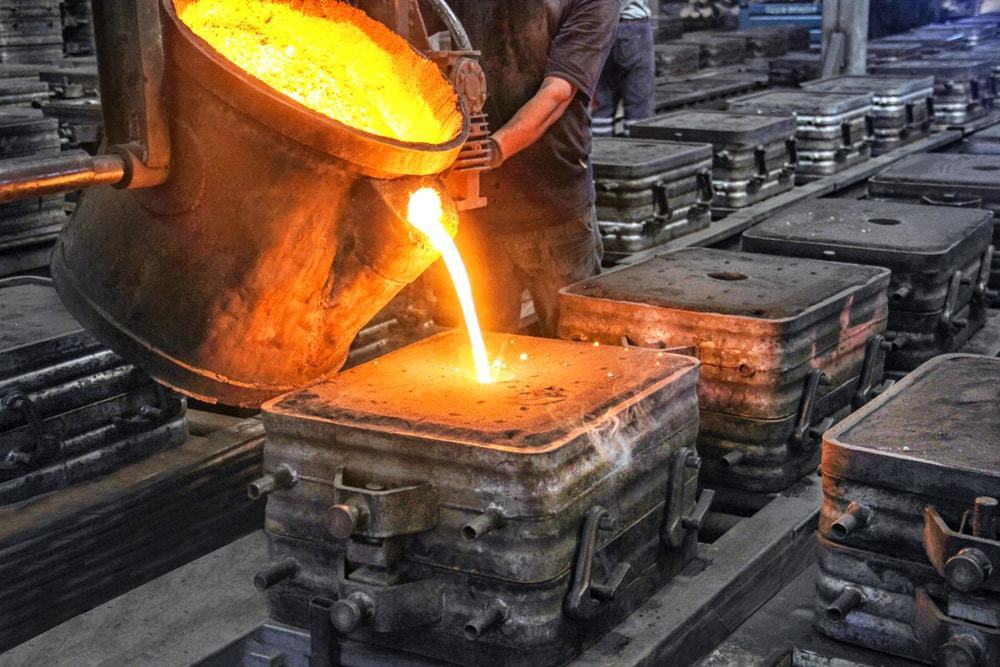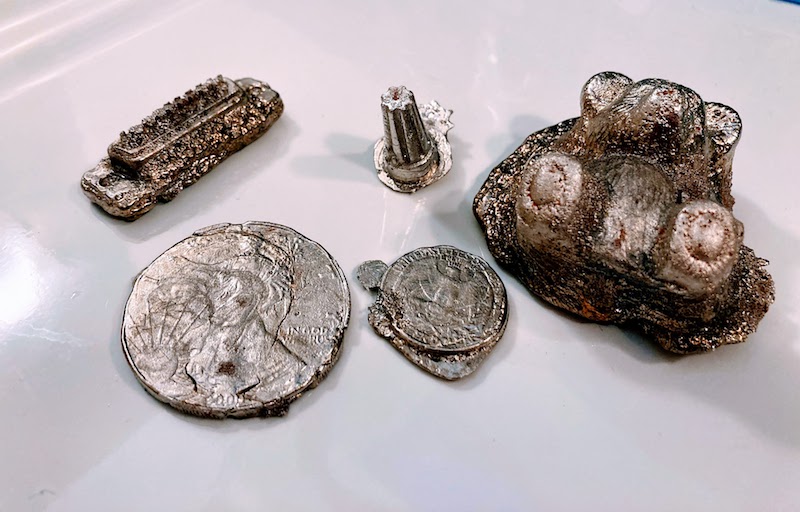Exploring how Aluminum Foundry methods improve consistency across industries
Wiki Article
The Function of Metal Casting in Advancing Manufacturing Technologies
Metal Casting have especially influenced the development of producing technologies. They use distinct layout flexibility, enabling the creation of complex geometries crucial for different applications. Modern spreading techniques are being boosted by developments like 3D printing and automation. These growths not only boost performance yet additionally address obstacles in accuracy and sustainability. As industries remain to progress, the role of Metal Casting continues to be vital in forming their future. What lies ahead in this vibrant area?The Development of Steel Casting Methods
As the need for precision and effectiveness in manufacturing has expanded, the evolution of Metal Casting techniques has undertaken significant transformation. Historically, Metal Casting began with easy techniques such as sand spreading and lost-wax casting, which allowed artisans to develop elaborate forms. In time, advancements in modern technology presented processes like die casting and investment casting, improving accuracy and reducing waste. Aluminum Foundry. The introduction of computer-aided design (CAD) and simulation software program transformed the planning phases, enabling manufacturers to anticipate possible problems and enhance designs prior to production. Additionally, the advancement of new materials, such as sophisticated alloys and compounds, has actually broadened the scope of applications for Metal Casting. Automation and robotics have more refined casting processes, enhancing uniformity and performance. Because of this, the Metal Casting market has adapted to fulfill the requirements of modern-day manufacturing, focusing on sustainability and innovation to continue to be competitive in an ever-evolving industry
Applications of Metal Casting in Secret Industries
The advancements in Metal Casting methods have actually opened a wide range of applications throughout different sectors. In the automobile sector, Metal Casting are indispensable for producing engine blocks, transmission real estates, and other essential elements that require high toughness and toughness. The aerospace industry utilizes spreadings for detailed components like generator blades and structural elements, guaranteeing light-weight yet robust options for aircraft.
Furthermore, the building sector uses Metal Casting for architectural elements such as beam of lights and fittings, contributing to the integrity of buildings and infrastructure. In the energy field, spreadings play a critical duty in manufacturing components for wind turbines and power generation tools, enhancing efficiency and dependability. On top of that, the clinical area gain from accuracy spreadings utilized in surgical instruments and prosthetics, showing the flexibility of Metal Casting across varied applications. This broad utilization underscores the importance of Metal Casting in modern manufacturing methods.
Benefits of Metal Casting in Modern Production
Metal Casting offer countless benefits that significantly boost contemporary production processes. One crucial benefit is style versatility; Metal Casting enables for the production of complex shapes and elaborate geometries that are impossible or commonly hard to attain with various other producing techniques. This capacity enables manufacturers to enhance item styles for capability and performance.Furthermore, Metal Casting can support a large range of materials, including iron, steel, and aluminum, which can be tailored to my company satisfy certain mechanical homes and rust resistance demands.

Cost-effectiveness is an additional notable advantage; Metal Casting procedures can create big amounts of get rid of very little material waste, therefore lowering production costs.
The resilience of cast metal components adds to the long life of products, minimizing the requirement for frequent replacements. Overall, the benefits of Metal Casting significantly add to efficiency, sustainability, and innovation within modern-day manufacturing atmospheres.
Innovations Driving the Future of Metal Casting
While conventional Metal Casting strategies have served the industry well for decades, recent advancements are link positioned to revolutionize the area. Breakthroughs such as 3D printing modern technology allow for quick prototyping and the production of complex geometries that were previously unattainable. These advancements not only improve design versatility however also lower waste and shorten lead times. In addition, the assimilation of automation and robotics in casting procedures is improving procedures, improving precision, and improving employee security. Moreover, the development of composite materials and new alloys is enabling the production of stronger, lighter spreadings customized for particular applications. Digital technologies, including expert system and artificial intelligence, are optimizing casting parameters and anticipating maintenance, driving improved quality assurance. Jointly, these technologies are pressing the boundaries of Metal Casting, cultivating greater efficiency and sustainability in manufacturing, and positioning the industry for future development and competition.Obstacles and Solutions in Metal Casting Processes
As advancements in Metal Casting technology continue to improve the market, numerous difficulties remain that manufacturers need to deal with to totally utilize these advancements. One significant problem is the irregularity in material residential properties, which can cause irregular high quality and performance. This irregularity usually arises from fluctuations in resources and handling conditions. Additionally, the climbing prices of power and products present financial restrictions, pressing manufacturers to seek a lot more effective procedures.To combat these difficulties, companies are increasingly taking on automated systems and progressed simulation strategies to boost accuracy and consistency. Carrying out quality assurance steps throughout the manufacturing procedure additionally assists in detecting issues early. Spending in study for different products may decrease costs and improve sustainability. By resolving these obstacles with cutting-edge options, the Metal Casting industry can improve productivity and keep competitiveness in the evolving production landscape.
Often Asked Inquiries
What Products Are Typically Made Use Of in Metal Casting Processes?
Common products used in Metal Casting procedures consist of light weight aluminum, magnesium, bronze, and iron. Each product has distinct buildings that accommodate different applications, enhancing the flexibility and capability of the last actors products in numerous markets.Just How Do Environmental Laws Influence Metal Casting Operations?
Environmental policies force Metal Casting procedures to adopt cleaner practices and modern technologies, frequently boosting manufacturing expenses. Conformity may result in innovative procedures that lower waste and emissions, eventually promoting sustainability within the Metal Casting market.What Are the Precaution in Metal Casting Facilities?
Precaution in Metal Casting discover this facilities include appropriate ventilation, personal protective equipment, regular safety and security training, equipment upkeep, and adherence to safety policies, making certain a safe and secure atmosphere for employees while lessening threats connected with harmful products and procedures.Exactly How Is Top quality Controlled in the Metal Casting Refine?
Quality control in Metal Casting involves rigorous evaluations, consisting of visual assessments, dimensional checks, and material screening. Adherence to industry criteria and carrying out top quality management systems ensures that castings fulfill given requirements throughout the manufacturing process.
What Is the Future Job Expectation for Metal Casting Professionals?
The future work overview for Metal Casting professionals shows up appealing, driven by innovations in innovation and increasing need throughout numerous markets (Wisconsin Aluminum Foundry). Growth in automation and sustainable practices will likely develop brand-new possibilities in this fieldHistorically, Metal Casting started with easy methods such as sand casting and lost-wax casting, which allowed craftsmens to create intricate forms. Over time, improvements in technology presented processes like die casting and investment casting, enhancing accuracy and decreasing waste. In addition, the medical area advantages from accuracy spreadings utilized in surgical tools and prosthetics, demonstrating the flexibility of Metal Casting across diverse applications. Metal Casting provide many advantages that greatly boost contemporary production processes. Usual materials made use of in Metal Casting processes include light weight aluminum, magnesium, iron, and bronze.
Report this wiki page